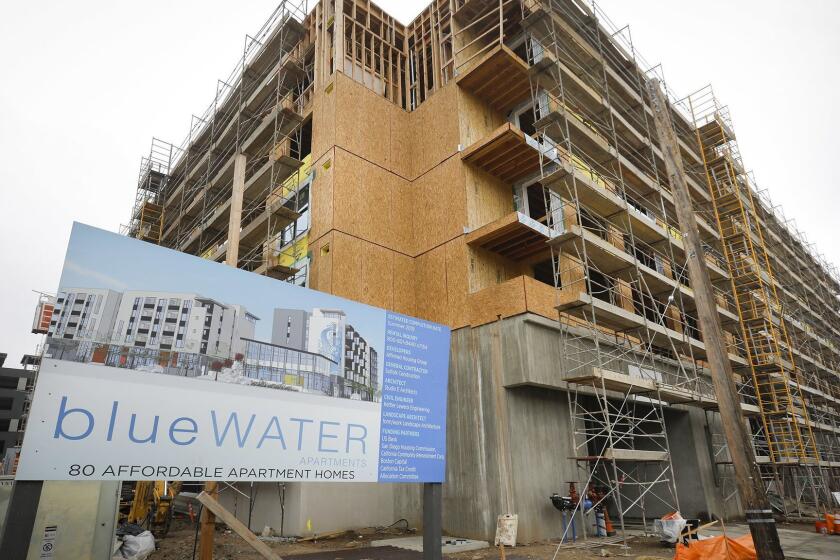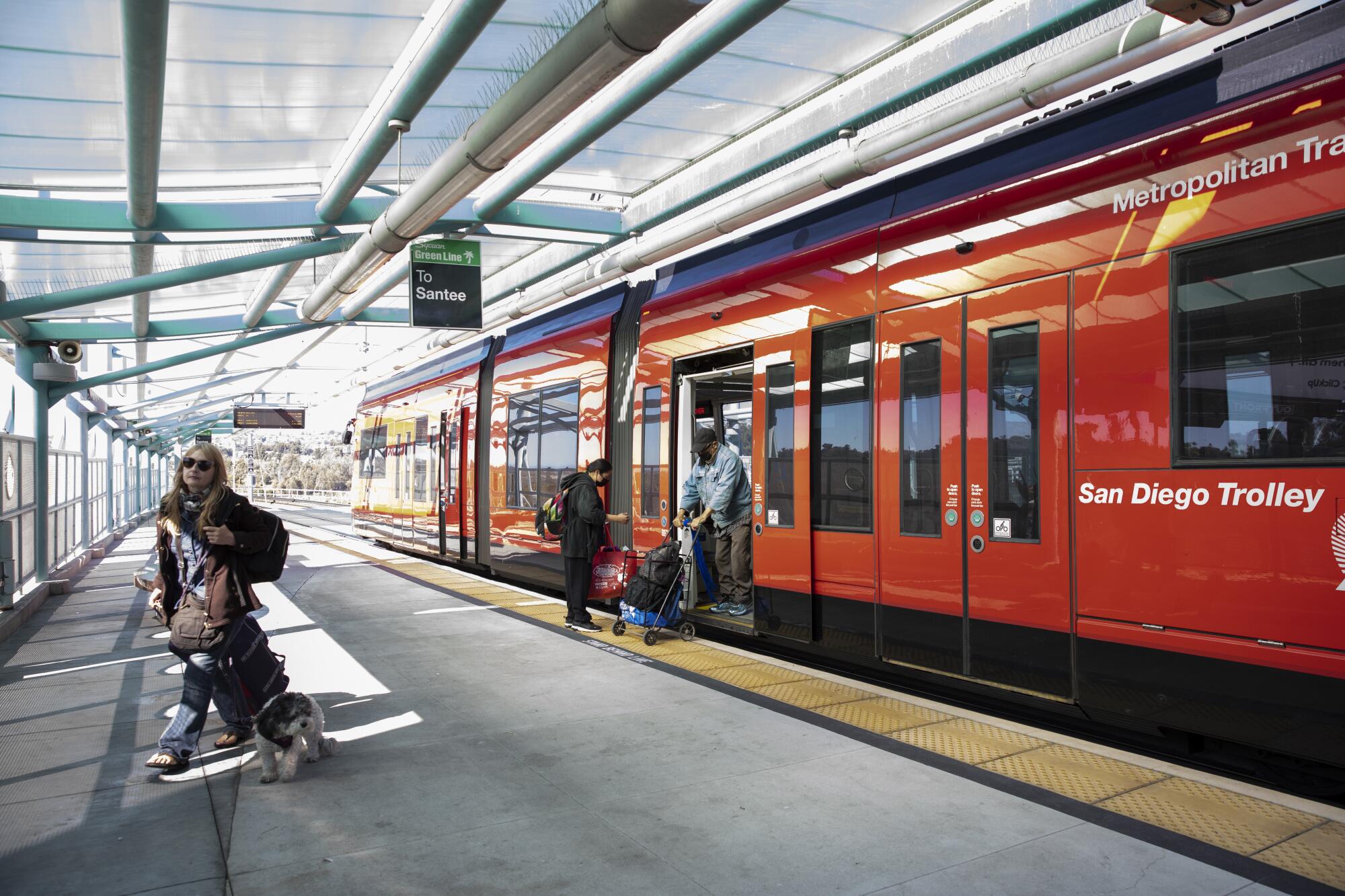
City is more focused on transit-oriented development, zoning changes to spur projects
San Diego’s new trolley line to La Jolla is expected to immediately and significantly impact local commuting, commercial development and housing construction much more quickly than a similar trolley line built through Mission Valley 20 years ago.
Government officials and community leaders say the timing of the new line, slated to begin running next Sunday, is far superior to the launch of the green line years ago because the city is more focused now on using trolley stations as centerpieces for dense development projects.
This story is for subscribers
We offer subscribers exclusive access to our best journalism.
Thank you for your support.
When the green line connecting Old Town and La Mesa was completed in 2005, what is now called transit-oriented development hadn’t yet become a popular solution to problems like the housing crunch, traffic congestion and climate change.
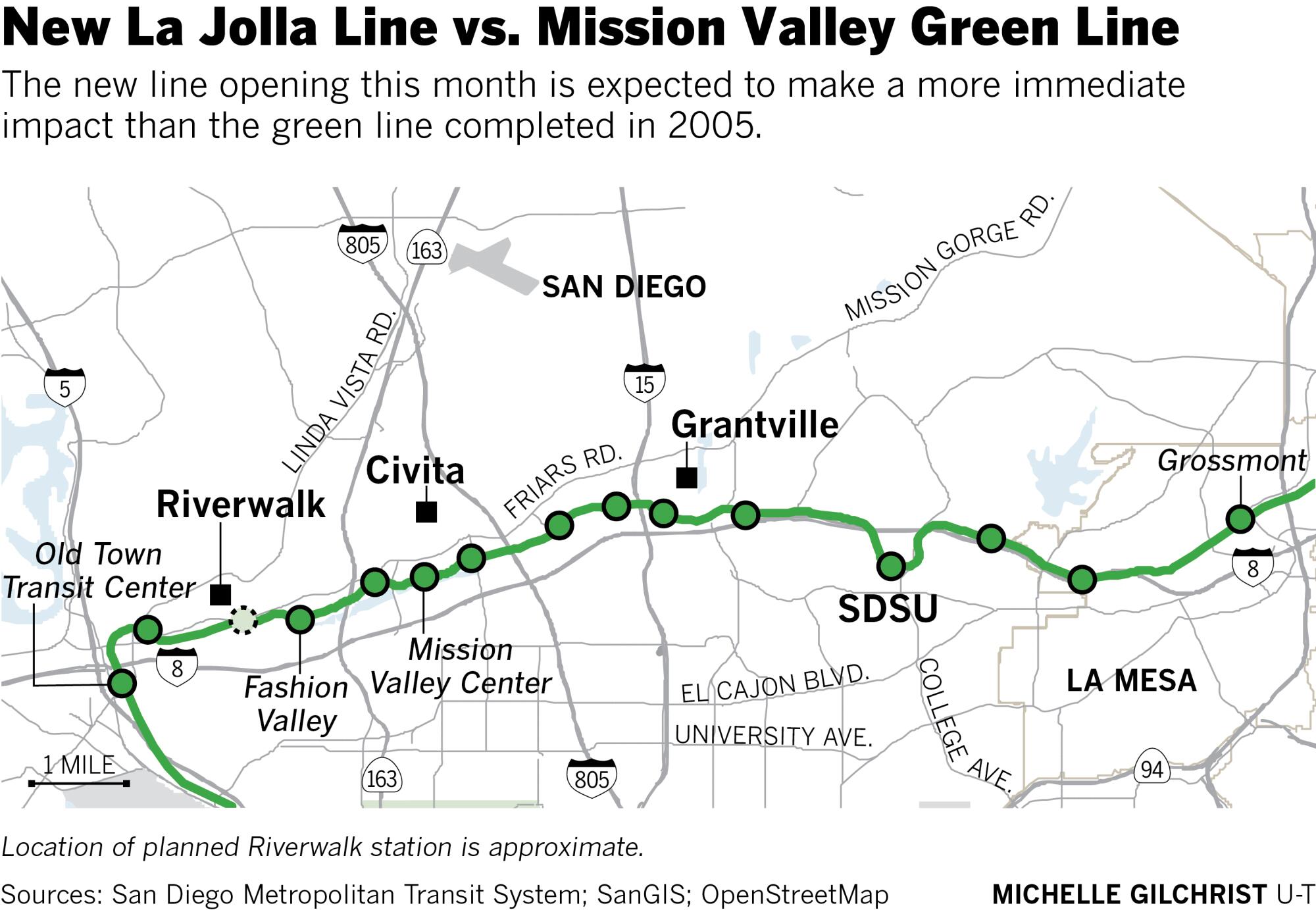
Only in recent years has San Diego begun offering developers steadily increasing incentives to build high-rise and mid-rise housing and commercial projects along transit lines to fight urban sprawl and help solve an affordable housing crisis.
“The timing of this couldn’t be better,” said Ray Major, chief of data and analytics for the county’s regional planning agency — the San Diego Association of Governments. “Everyone is now focused on transit-oriented development.”
$2.2B project, which opens Nov. 21, connects region’s No. 1 job center, largest university to mass transit
Another reason there is optimism that the La Jolla line will make a bigger impact than the green line is that city officials, developers and residents are much more prepared to make it a success.
Growth blueprints for Mission Valley and Grantville, two areas on the green line ripe for intense development, were not updated to encourage trolley-adjacent development projects until more than a decade after the green line opened.
In contrast, blueprints for many neighborhoods along the new La Jolla line have already been updated to allow buildings as tall as 100 feet and to encourage commercial and housing projects focused on the new trolley stations.
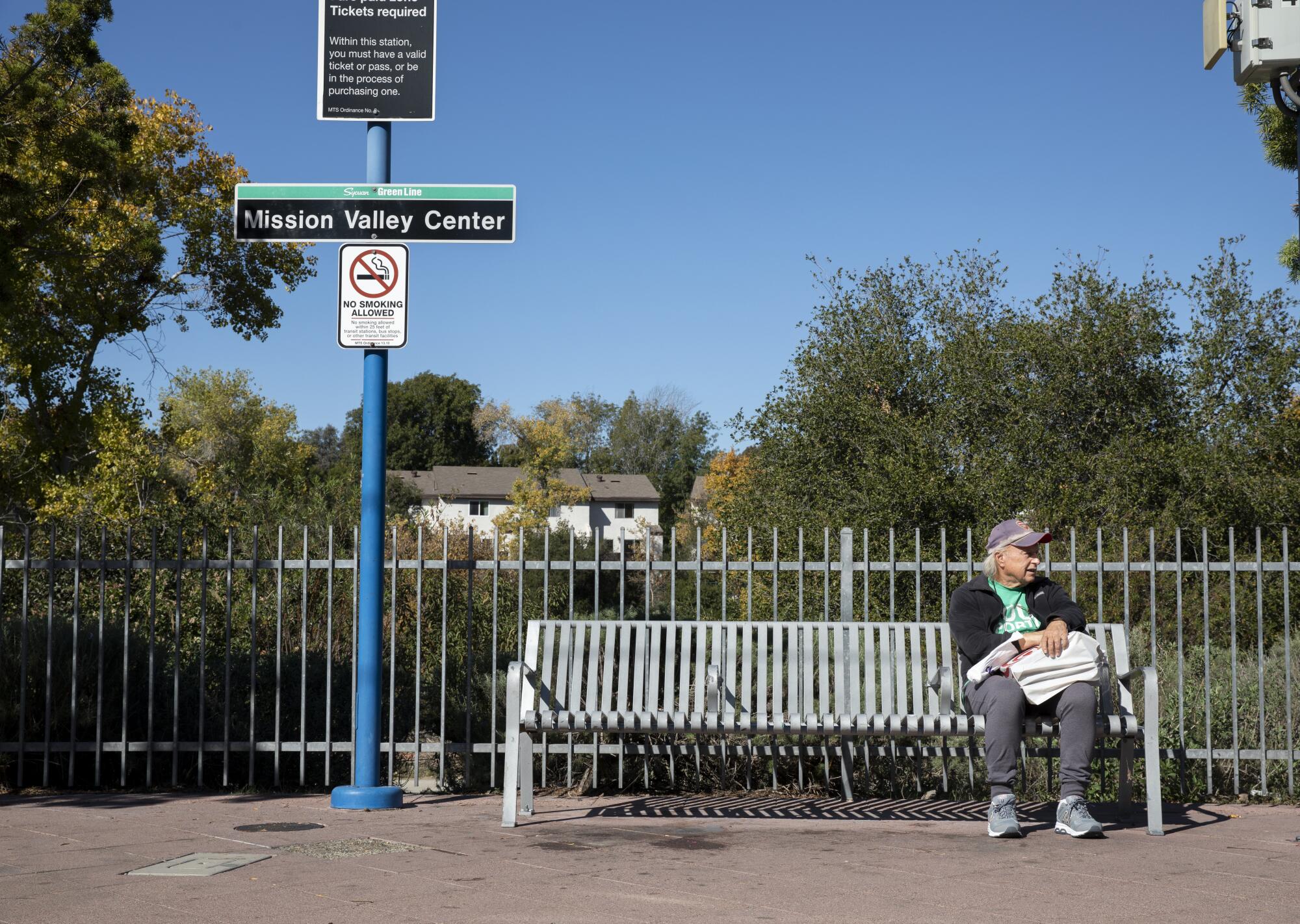
The La Jolla line also is being embraced by property owners more enthusiastically than the green line, where many of the stations are on the outskirts of development projects and commercial centers instead of serving as focal points.
The starkest example is the largest shopping malls served by the two trolley lines.
The green line trolley station at Fashion Valley mall is farther away from shopping areas than all the parking lots, while Westfield UTC remodeled its mall to make the new La Jolla line an integral element and to make transit as convenient as possible.
“UTC did all of that in advance because they knew they would be a draw on the new line,” said Sharon Humphreys, SANDAG’s director of engineering and construction.
Another reason for optimism about the La Jolla line is a recent boom in construction along the green line after nearby growth blueprints were updated and city officials got more focused on transit-oriented development.
Thousands of new housing units are either under construction or recently have been completed in Grantville, a neighborhood just east of Mission Valley that previously was home to auto repair shops and other commercial businesses — but very little housing.
San Diego officials say they may have a local model for their strategy to solve the city’s housing crisis by placing dense high-rise apartments and condominium complexes along trolley lines.
The new developments were spurred by the City Council’s approval in 2015 of a new growth blueprint for the area that allows more dense projects because of the neighborhood’s trolley station.
The best example of new momentum on the green line is probably Riverwalk San Diego, a mixed-use community where the developer reversed course after years of planning and decided to help build a new trolley stop on-site.
Riverwalk, which the City Council approved a year ago for 195 acres near the western edge of the green line, was initially planned according to San Diego’s old automobile-based paradigm for development.
But city incentives and new momentum for transit-oriented development prompted what many characterize as a dramatic shift for the project, which will replace a golf course.
In the works for decades, mega development would add 4,300 housing units near a new transit station in Mission Valley
“A brand-new trolley stop is the heart of the project, and we want Riverwalk to be a paradigm-shifting development that changes the way people think about riding the trolley in San Diego,” Eric Hepfer, a member of the development team, told city officials last year.
The growth blueprint for Mission Valley, which was updated for the first time in nearly 35 years in 2019, envisions and encourages many similar projects focused on trolley stations.
“Surrounding these bustling trolley stations, mixed-use transit-oriented development will take shape like a string of pearls comprised of attractive buildings with numerous windows, airy balconies and al fresco dining,” says the blueprint, formally known as a community plan.
Even before the Mission Valley growth blueprint was updated, the green line had spurred some dense projects. Rio Vista, a mixed-use neighborhood just west of the stadium site, was built in 2002. And Civita, a mixed-use project just west of Interstate 805, was built starting in 2011.
Former San Diego Councilman Scott Sherman — whose district included Mission Valley when he served from 2012 to 2020 — said last week that the green line should be characterized as something less than a gamechanger but something more than a failure.

“It wasn’t a mistake; it just took longer because there weren’t some of the mechanisms in place to make it go faster,” he said.
The revised growth blueprints for Mission Valley and Grantville will be key moving forward because they can spur ambitious projects by giving developers certainty about what the city will allow.
“Those areas are set up to do well,” Sherman said.
He added the green line’s success has been less about attracting lots of riders and more about allowing more dense developments because of potential trolley use in the future.
Sharp increases in ridership might also come when the La Jolla line begins running later this month, because that line will connect Mission Valley to the region’s No. 1 employment center — Sorrento Valley and University City — and the region’s largest university, UC San Diego.
“The new line will make the trolley an even more important part of Mission Valley because it will provide access to more places and things,” said Jonathan Frankel, chairman of the Mission Valley Community Planning Group. “The trolley allows people who live here and work here to access the rest of the region.”
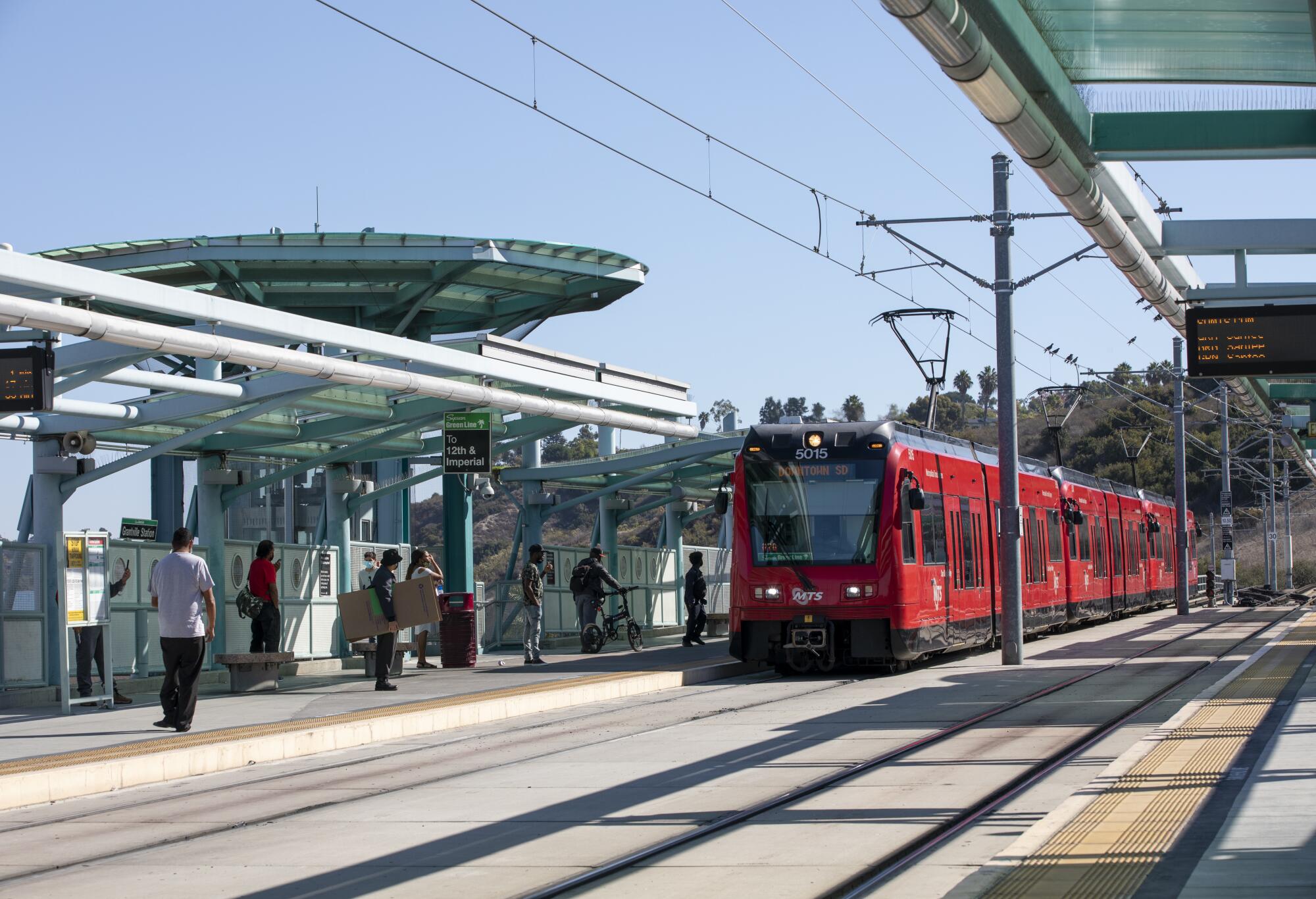
Frankel said many skeptics of the new trolley line and of San Diego’s transit system in general are probably unaware of the “generational shift” in attitudes toward transit.
“Millennials and folks that are younger are excited about taking the trolley and biking and walking,” said Frankel, a 34-year-old millennial. “They are no longer focused on the idea that you need to have a car and that’s the best way to get around.”
Frankel agreed that many of the green line stations are not well-integrated into the developments and areas they serve. He also conceded that the green line has been far from an overnight success.
“It would be great if things moved faster, but overall the community here really benefits from the trolley,” he said.
The green line was built in separate 6-mile pieces, with the Old Town to Rancho Mission Road segment opening in 1998 and the segment from Rancho Mission to Grossmont Center opening in 2005.
About 13 million people a year ride the green line, according to the Metropolitan Transit System.
The nine-station La Jolla line will run 11 miles from Old Town to UCSD. SANDAG estimates the new line will attract 20,000 new transit riders a day.
Get Essential San Diego, weekday mornings
Get top headlines from the Union-Tribune in your inbox weekday mornings, including top news, local, sports, business, entertainment and opinion.
You may occasionally receive promotional content from the San Diego Union-Tribune.

